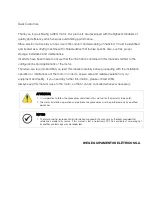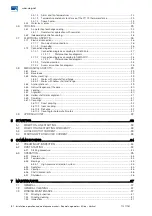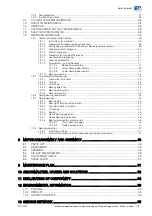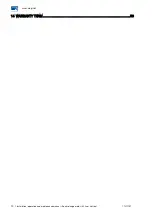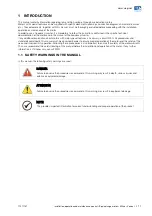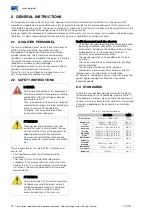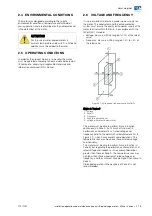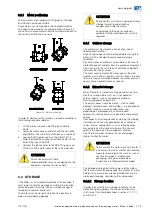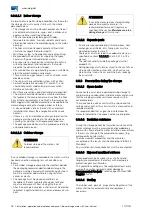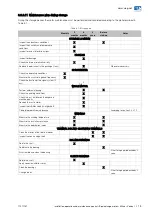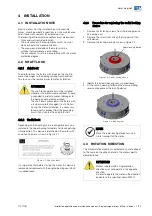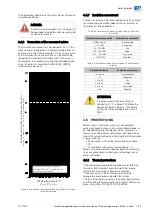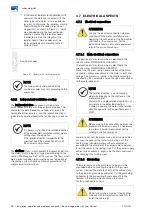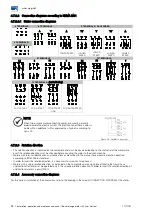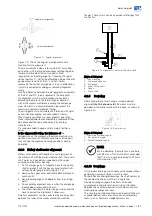
18 l
Installation, operation and maintenance manual – Squirrel cage motor – M line – Vertical 11371757
3.3.3.7
Air-water heat exchanger
To ensure better conditions or the radiator storage for
long-term storage, the following criteria must be strictly
met:
Remove the flanged connections from the radiator to
gain access to it;
Drain the water inside the radiator tubes and heads
completely;
Blow hot air in one of the nozzles from 15 to 20 minutes
in order to eliminate humidity inside of radiator. For this
procedure, the radiator tubes shall be horizontally
placed, and the inlet and outlet water flanges placed in
such a way that the water are eliminated;
After dried, the nozzles shall be covered with blind
flanges with new sealing gaskets in order to assure a
perfect sealing;
Install a pressure gauge on one of the blind flanges and
a globe valve on the other;
Pressurize the cooler with inert gas (Nitrogen or other)
at a pressure of 1.2 bar abs;
This pressure shall be checked monthly during the
radiator term storage, which shall not be exposed to
temperatures exceeding 50°C;
Considering that the storage procedure is followed, the
radiator seals must be replaced every 3 years, as
recommended by the radiator supplier.
ATTENTION
The pressurized radiator must be handled
with care. Use a warning plate informing that
the equipment is pressurized and should not
be exposed to temperatures exceeding
50°C.
NOTE
During short operation stoppages, instead of
draining the water, it is preferable to keep its
circulation at low speeds through the heat
exchanger, thus ensuring that harmful
products, such as ammonia compounds and
hydrogen sulfide, are taken out of the
radiator and not deposited inside.
3.3.3.8
Cleanliness and conservation of the
motor during storage
The motor should be free of oil, water, dust and dirt.
The motor outside must be cleaned with compressed
air under reduced pressure;
Remove the removable rust signs with a clean cloth
soaked in petroleum solvent.
Check that the bearings and lubrication hollows are free
of dust and dirt and if the bearing plugs are properly
tightened.
Risks, marks or rust on the shaft-end should be carefully
removed.
3.3.3.9
Inspections and records during storage
The stored motor must be inspected periodically and
inspection records must be filed.
The following items must be inspected:
1.
Check the motor for physical damages and repair it, if
necessary;
2.
Inspection of the cleanliness conditions;
3.
Check for signs of water condensation inside the
motor;
4.
Check of the protective coating conditions of the
exposed machined parts;
5.
Check the paint conditions, and repair if necessary;
6.
Check for aggressive agents signs;
7.
Check the operation of the space heaters;
8.
Measure and record the ambient temperature and
relative humidity around the motor;
9.
Measure and record the temperature, insulation
resistance and polarization index of the stator winding;
10.
Make sure that the storage location complies with the
criteria described in section 3.3.2.1.
3.3.3.10
Predictive / preventive maintenance
WEG recommends that, every 3 years of storage, the
stored motor be sent to a WEG Authorized Repair Shop or
to WEG own factory, in order to perform a complete
predictive maintenance.
The complete predictive maintenance procedure
comprises disassembling the complete motor for
inspection and, after assembly, performing a routine test in
the laboratory.


